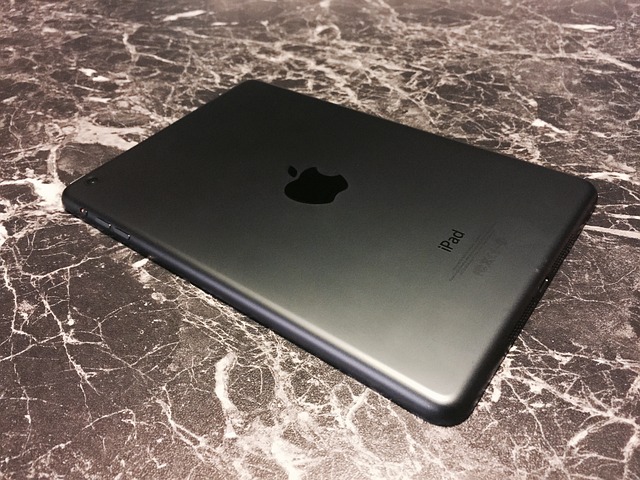If your iPad is experiencing frequent software crashes, unintended shutdowns, or erratic app behavior, it may be due to a degrading battery. As iPads age, their lithium-ion batteries can lose capacity and efficiency, often leading to performance issues when the voltage drops below safe levels. Replacing the iPad battery is a recommended solution to stabilize device performance and minimize software crash incidents. This procedure not only rejuvenates the iPad but also extends its operational lifespan by restoring its ability to charge swiftly and maintain power effectively. Early detection of slow charging, inconsistent power holding, or noticeable drops in battery life are key indicators that it's time for a battery replacement. Regular monitoring of charging patterns and establishing reliable backup procedures can prevent data loss and ensure your iPad remains functional and efficient. Additionally, if you observe any unusual swelling or bulging of the battery, which indicates cell pressure increase and potential degradation, immediate battery replacement is essential for both performance and safety reasons. Professional repair services should be consulted for a safe and effective replacement to avoid further damage or complications. In summary, replacing an ipad battery is crucial for maintaining optimal device functionality, preventing data loss, and ensuring the iPad's longevity.
When the reliability of your iPad starts to wane, with software crashes becoming more frequent or charging taking longer than usual, it might be time to consider replacing your iPad battery. This article outlines ten clear indicators that signal the need for a new battery, ensuring your device operates at its peak efficiency. From recognizing the telltale signs of diminished performance to addressing the visible swelling that warns of potential damage, these insights will guide you on when and how to replace your iPad battery with confidence.
- Recurring Software Crashes: Understanding the Signs Your iPad Battery Needs Replacement
- Diminished Battery Performance: How Slower Charging Times Indicate It's Time to Replace Your iPad Battery
- Unreliable Power Hold: The Importance of Consistent Backup in Deciding to Replace Your iPad Battery
- Visible Swelling or Bulging: A Clear Visual Cue for Replacing Your iPad Battery
- Frequent System Reboots: The Connection Between Reboot Loops and the Need for a New iPad Battery
Recurring Software Crashes: Understanding the Signs Your iPad Battery Needs Replacement

Recurring software crashes on your iPad can be a frustrating experience, often indicative of underlying battery issues. As lithium-ion batteries age, their ability to hold and supply charge diminishes, which can manifest as unexpected shutdowns or app malfunctions. These battery performance degradations are common as the cell’s capacity reduces over time due to charge cycles and natural wear. If you notice your iPad frequently restarting without provocation, or if apps are crashing more often than usual, it may be a sign that your battery’s health has declined. Such occurrences typically happen when the battery’s voltage dips too low for the iPad to continue operating safely. To address this, consider replacing your iPad battery with a new one. A fresh battery can restore stability and ensure your device operates efficiently, reducing the likelihood of software crashes that disrupt your work or entertainment. Replacing an old battery with a new one not only extends the life of your iPad but also enhances its performance, making it a worthwhile investment for anyone experiencing these recurring issues.
Diminished Battery Performance: How Slower Charging Times Indicate It's Time to Replace Your iPad Battery

As your iPad ages, one of the most noticeable signs that its battery is on its way out is a significant reduction in charging efficiency. If you’ve observed that it takes increasingly longer to charge your iPad from a depleted state compared to when it was new, this could be an indication that the battery’s capacity has diminished. Typically, an Apple iPad should reach approximately 50% battery life within about 30 minutes of charging. If it’s taking significantly more time to achieve this milestone, it might be time to consider replacing the battery. This decline in charging performance is often a precursor to other issues such as reduced power output and shorter operational times between charges. Regularly monitoring your iPad’s charging patterns can help you anticipate when a battery replacement would be beneficial, ensuring that you maintain optimal performance from your device. Replacing an aging battery with a new one can breathe new life into your iPad, restoring its ability to hold a charge for longer periods and revert to the faster charging times that you experienced initially. It’s advisable to address this issue proactively before it escalates to complete battery failure or affects other components due to prolonged strain.
Unreliable Power Hold: The Importance of Consistent Backup in Deciding to Replace Your iPad Battery

When your iPad’s power hold becomes unreliable, it’s a clear indicator that your device’s battery might be on its last legs. As the capacity to retain a charge diminishes, you may notice inconsistent power levels or a significantly reduced battery life compared to when the device was new. This unpredictability can be particularly disruptive for users who rely on their iPads for work, study, or entertainment, making it essential to consider a replacement. Consistent backup solutions, such as regular data synchronization with iCloud or external storage devices, become even more critical under these circumstances. Ensuring your important files are safely backed up can alleviate concerns about potential data loss when the battery finally gives out. If you’re experiencing frequent instances where your iPad shuts down unexpectedly or struggles to hold a charge for an acceptable length of time, it may be time to replace your iPad battery. This not only extends the lifespan of your device but also guarantees that you won’t lose precious data due to power interruptions. Regular maintenance and timely battery replacement are key to maintaining optimal performance from your iPad.
Visible Swelling or Bulging: A Clear Visual Cue for Replacing Your iPad Battery

When your iPad battery starts to exhibit a noticeable swelling or bulging, it’s a clear visual cue that it’s time to replace it. This physical distortion is often indicative of internal pressure building up due to the degradation of battery cells. As these cells lose their ability to hold a charge and manage electrical flow effectively, they can become unsafe and potentially hazardous. The process of electrolyte decomposition within the aging battery leads to increased cell volume, which manifests as swelling or bulging. If you notice your iPad’s battery protruding from its usual compartment or appearing visibly inflated, it’s crucial to address this issue promptly. Continuing to use an iPad with a swollen battery can pose a risk of overheating and even cause physical damage to the device. Therefore, replacing the battery is not just about maintaining optimal performance but also ensuring the safety and longevity of your valuable gadget. For those experiencing this concern, seeking professional assistance for a battery replacement is highly recommended to prevent any further complications.
Frequent System Reboots: The Connection Between Reboot Loops and the Need for a New iPad Battery

When your iPad begins to exhibit a pattern of frequent system reboots, it may be more than an occasional annoyance—it could be a sign that your iPad battery needs replacing. These reboot loops, where your device restarts repeatedly and unintentionally, are often symptomatic of a battery that’s no longer holding a charge as it once did. Over time, the lithium-ion battery in your iPad degrades, losing its ability to provide the necessary voltage to power your device consistently. As a result, the iPad’s internal mechanisms may misinterpret the battery’s output, leading to erratic behavior and eventual failure. Regular reboots can strain your device, potentially causing data corruption or loss. Recognizing this pattern early is crucial for maintaining the performance and longevity of your iPad. If you notice that your iPad is rebooting more often than usual, it may be time to consider replacing the battery to restore optimal functionality and prevent any further issues that could arise from continued battery degradation. It’s advisable to address this problem promptly, as a healthy battery is essential for your iPad’s smooth operation and overall user experience.
When an iPad’s performance starts to wane, it’s often a sign that its battery is due for replacement. Recurrent software crashes, slower charging times, and frequent system reboots can be more than just an inconvenience; they are clear indicators that your device’s battery health has diminished and a replacement is in order to restore optimal performance. If you’ve noticed your iPad’s power hold isn’t as reliable as it once was or if the battery appears visibly swollen or bulging, these are definitive signs that it’s time to replace your iPad battery. To ensure your device remains a trusted companion, consider these ten signs and act promptly to replace your iPad battery when necessary. This will not only enhance your user experience but also extend the lifespan of your valuable gadget.
